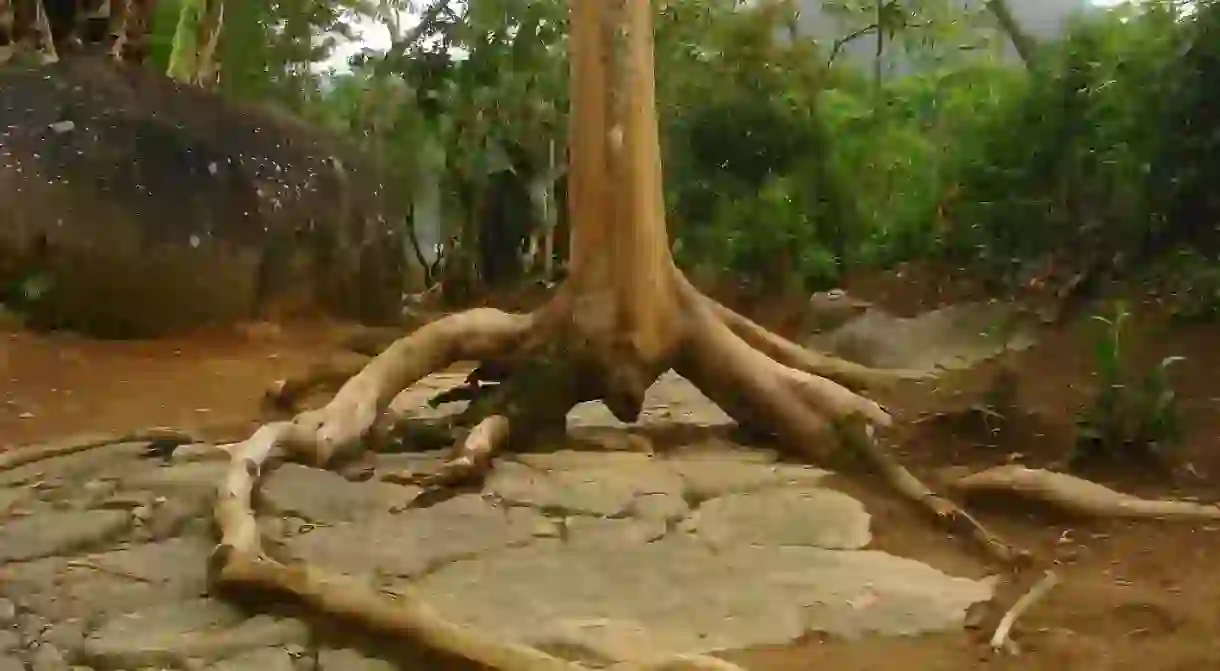A Guide to Exploring Paraty's Gold Trail

Paraty’s Caminho do Ouro, or Gold Trail, is a remarkable road through history. Laid by slaves to transport gold from Minas Gerais to the coast, it was a crucial thoroughfare from the 17th-19th centuries. These days it’s a bucolic passage through Brazil’s abundant Mata Atlântica rainforest, with a few stops along the way including pousadas, restaurants, bathing pools and waterfalls.
Background
The picturesque town of Paraty lies on the Emerald Coast between Rio de Janeiro and São Paulo. It was built by the Portuguese in the 1500s, and became a major port during their heyday in Brazil. When Rio became vulnerable to pirates, vast amounts of gold and other metals that had been mined in the neighboring state of Minas Gerais were shipped out from here to Portugal and beyond.

Construction
The Portuguese were also responsible for bringing hundreds of thousands of slaves to Brazil. It was these men, who had mostly come from Africa, who laid the road between São Paulo, Rio de Janeiro and Minas Gerais states. Vast chunks of rocks were blasted from the ground using gunpowder and used to create huge cobbles to pave the highway, which became known as the Estrada Real.
The road today
In total the trail runs a length of 1,931 km (1,200 miles) through thick, tangled forest with a stretch running through what is today Serra da Bocaina National Park. It is long and physically demanding, and is thought to have taken around 100 days to travel the full distance when it was first constructed. If you have the time and inclination you can hike it in its entirety, but a more manageable option is to take a day trip from Paraty.

Hiking the Caminho do Ouro
There is a short circuit of waterfalls and freshwater pools that are easily reached from the town, though taking a guide is recommended if you want to walk some of the cobbled gold trail beyond. The route is less than 4 km (2.5 miles) long, taking around three hours factoring in various stops. There are a reputable guiding companies in Paraty who can arrange your transport and tailor your tour to afford expert insight into the history of the road, as well as the flora and fauna of the area.

Wild swimming
For those who prefer to go alone or spend a whole day in the area, the swimming spots and waterfalls before the official start of the trail are a great option. First stop is the Poço do Inglês (the ‘Well of the English’), a tranquil dipping pool with dripping vines and a swing rope. After the Ponte Branca, or White Bridge, is the Pedra Branca which is a frothing white cascade over the rocks – nearby you can see the remains of an old hydro plant.
A little further on is the Sete Quedas – the Seven Falls – where the water washes over some of the rocks like a white veil and slips quietly over others. Then, after Poço da Usina and Poço da Jamaica, comes the big attraction – Cachoeira do Tobogã, the toboggan waterfall that you can slide down on your feet or bottom.

Points of interest
Along the way you can also visit the Igreja da Cunha church which stands at the top of a steep set of stairs. A white building with blue highlights and three triangular cone-shaped towers, it guards over the entrance to the Gold Trail. For food, swing by the other side of the Poço do Tarzan pool where there is a good café that serves up a reviving bowl of açaí, while for drink the Engenho D’ouro distillery gives a fascinating insight into how Brazil’s national firewater, cachaça, is made. If you want something a little different, the Espaço Criativo Artuso sells jewellery, art and ceramics, as well as having beds and an Asian restaurant serving delicious dishes.

Flora and fauna
The trail is a home to diverse plants, trees, flowers, insects and animals. You will notice them along the way and may be able to see small monkeys, termite mounds, ants and hummingbirds, as well as hear many of the other birds that live in the forest. Look out for the ever-spreading ‘Shameless Mary’ plant and take in the huge old trees that may have been around long enough to see gold pouring out along the road.













